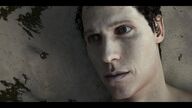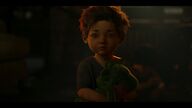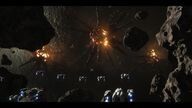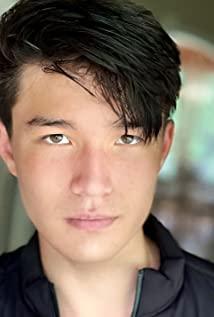Rather than Wang Zhuang, I personally feel more like a jaw-dropping game made by a few top players who ignore all established norms and restrictions when they have nothing to do. Randomly changing time, different styles, completely different choreographers, themes of heaven and earth, arbitrary forms, unrestrained, unrestrained, and free-spirited. And hidden under the sky-defying technology shell that is the ceiling as soon as it comes out is a pair of cold eyes that are exhausted and profound. The most detailed "Sunny's Advantage", the most artistic "witness", the most thoughtful "Beyond the Crack", the most metaphorical "Happy Hunting", the most philosophical "Qima Lan". These amazing eighteen works fully demonstrate that animation is far more than a cute, exquisite and gorgeous form of Disney. It can be black, cult, pioneering, experimental, terrifying, and warm. And wrapped in the eighteen works of different styles are consistent speculation and reflection. The real body and manipulation in the first episode, the robot and human in the second episode, the victimization and persecution in the third episode, the defense and colonization in the fourth episode, the escape and deep trapping in the fifth episode, and the resistance, dependence and the sixth episode. Abandoned, Reality and Illusion in Chapter 7, Hunting and Anti-hunting in Chapter 8, Garbage and Backlash in Chapter 9, Kindred and Alien in Chapter 10, Helper and Broken Hand in Chapter 11, Chapter 10 The beauty and decay of the second chapter, the luck and misfortune of the thirteenth chapter, the beginning and the end of the fourteenth chapter, the sight and the blind spot of the fifteenth chapter, the moment and eternity of the sixteenth chapter, the inevitability of the seventeenth chapter And by chance, the cause and effect of Chapter 18 are all deafeningly deconstructing the same question: "Is what we see with our own eyes the truth?" "Is it always this way?"
View more about Love, Death & Robots reviews











